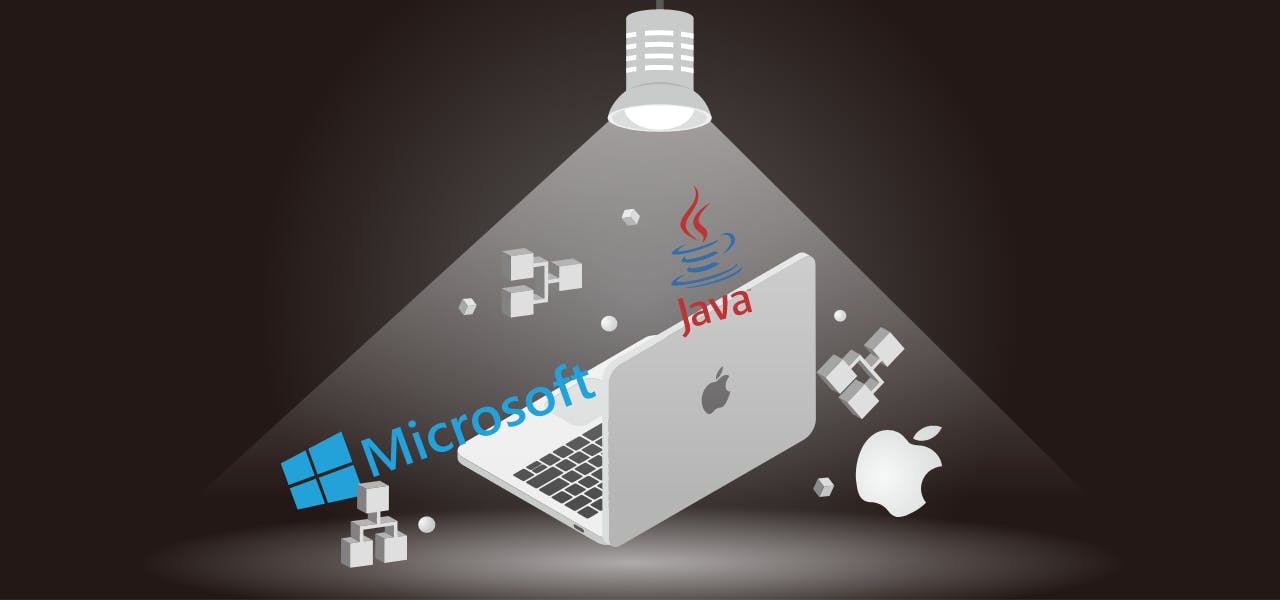Microsoft and Azul Working to Bring Java to ARM Architecture

Apple announced at their 2020 WWDC event that the Mac would transition to Apple’s ARM-based custom chips, instead of Intel’s processors. Although the news was widely anticipated in the months leading up to WWDC, the monumental nature of the change had developers both excited and apprehensive about the future.
In short order, Microsoft announced an increased focus on bringing Windows to ARM processors, including the ability to run x64 apps via x64 emulation.
In view of these developments, it’s little wonder that Microsoft and Azul are among the companies working to bring Java to ARM-based Mac and Windows platforms.
The Move to ARM: The Driving Motivation
Intel has dominated the personal computer space for so long that many wonder why Apple, and now Microsoft, are looking to switch platforms.
Unfortunately, despite its dominance, Intel has struggled in recent years to keep up with advancements in the industry. The company has struggled to move to 10nm and 7nm processors, and has also dealt with ongoing supply issues. To make matters worse, many of its processors have been plagued with Zombieland security flaws, some of which have been labeled unfixable.
According to one former engineer, the nail in the coffin came with the release of the Skylake line of processors and their horrendous quality control.
"The quality assurance of Skylake was more than a problem ... It was abnormally bad,” said François Piednoël. “We were getting way too much citing for little things inside Skylake. Basically our buddies at Apple became the number one filer of problems in the architecture. And that went really, really bad. When your customer starts finding almost as much bugs as you found yourself, you're not leading into the right place."
In the meantime, Apple had enjoyed major success using ARM-based chips in its iPhone and iPad devices. In fact, when Apple released the 2018 iPad Pro, the company touted its performance as being faster than 92 percent of PCs on the market. Even more impressive, Apple’s chips run so efficiently they don’t require any fans. This means they run cooler and use less power than Intel’s chips.
Once Apple announced their intention to switch to ARM-based chips, it was only a matter of time before Microsoft went all-in on ARM as well. As former Apple executive and Be, Inc. founder Jean-Louis Gassée predicted, “This leaves Microsoft with a choice: Either forget Windows on ARM and cede modern PCs to Apple, or forge ahead, fix app compatibility problems and offer an ARM-based alternative to Apple’s new Macs. It’s a false dilemma, of course. Microsoft will forge ahead…with repercussions for the rest of the Windows PC industry.
“Specifically, what are Dell, HP, Asus, and others going to do if Apple offers materially better laptops and desktops and Microsoft continues to improve Windows on ARM Surface devices? In order to compete, PC manufacturers will have to follow suit, they’ll ‘go ARM’ because, all defensive rhetoric aside, Apple and Microsoft will have made the x86 architecture feel like what it actually is: old.”
Java and ARM: A Bright Future Ahead
Java is one of the most popular programming languages in the world, and has consistently been in the top three for years. The language is used for everything, including desktop software, mobile apps, web servers, embedded applications and Internet of Things (IoT) devices.
Thanks to its popularity, bringing Java to ARM-based Mac and Windows PCs makes perfect sense. As a result, many developers were thrilled to see the announcement that Microsoft, Azul and others are working to port OpenJDK, an open source implementation of the Java Runtime Environment (JRE).
"Azul is building an Aarch64 port for MacOS, has drafted a JEP for the work, will do the work in the open as much as possible (limited by Apple's developer kit early access rules), and will contribute the complete work upstream to be included in e.g. OpenJDK 16 or 17," said Azul CTO Gil Tene. "Once we land this upstream, we also intend to build OpenJDK 11 and 8 variants and make sure developers and users have free binary OpenJDK distros available that will work on ARM-based Mac."
Many experts are already predicting that ARM-based Macs could quickly become the platform of choice for developers. Having Java available would be a big step in that direction. It’s a safe bet that OpenJDK on ARM-based Macs and Windows PCs will be a big hit.
Related Articles

Apple announced at their 2020 WWDC event that the Mac would transition to Apple’s ARM-based custom chips, instead of Intel’s processors. Although the news was widely anticipated in the months leading up to WWDC, the monumental nature of the change had developers both excited and apprehensive about the future.
In short order, Microsoft announced an increased focus on bringing Windows to ARM processors, including the ability to run x64 apps via x64 emulation.
In view of these developments, it’s little wonder that Microsoft and Azul are among the companies working to bring Java to ARM-based Mac and Windows platforms.
The Move to ARM: The Driving Motivation
Intel has dominated the personal computer space for so long that many wonder why Apple, and now Microsoft, are looking to switch platforms.
Unfortunately, despite its dominance, Intel has struggled in recent years to keep up with advancements in the industry. The company has struggled to move to 10nm and 7nm processors, and has also dealt with ongoing supply issues. To make matters worse, many of its processors have been plagued with Zombieland security flaws, some of which have been labeled unfixable.
According to one former engineer, the nail in the coffin came with the release of the Skylake line of processors and their horrendous quality control.
"The quality assurance of Skylake was more than a problem ... It was abnormally bad,” said François Piednoël. “We were getting way too much citing for little things inside Skylake. Basically our buddies at Apple became the number one filer of problems in the architecture. And that went really, really bad. When your customer starts finding almost as much bugs as you found yourself, you're not leading into the right place."
In the meantime, Apple had enjoyed major success using ARM-based chips in its iPhone and iPad devices. In fact, when Apple released the 2018 iPad Pro, the company touted its performance as being faster than 92 percent of PCs on the market. Even more impressive, Apple’s chips run so efficiently they don’t require any fans. This means they run cooler and use less power than Intel’s chips.
Once Apple announced their intention to switch to ARM-based chips, it was only a matter of time before Microsoft went all-in on ARM as well. As former Apple executive and Be, Inc. founder Jean-Louis Gassée predicted, “This leaves Microsoft with a choice: Either forget Windows on ARM and cede modern PCs to Apple, or forge ahead, fix app compatibility problems and offer an ARM-based alternative to Apple’s new Macs. It’s a false dilemma, of course. Microsoft will forge ahead…with repercussions for the rest of the Windows PC industry.
“Specifically, what are Dell, HP, Asus, and others going to do if Apple offers materially better laptops and desktops and Microsoft continues to improve Windows on ARM Surface devices? In order to compete, PC manufacturers will have to follow suit, they’ll ‘go ARM’ because, all defensive rhetoric aside, Apple and Microsoft will have made the x86 architecture feel like what it actually is: old.”
Java and ARM: A Bright Future Ahead
Java is one of the most popular programming languages in the world, and has consistently been in the top three for years. The language is used for everything, including desktop software, mobile apps, web servers, embedded applications and Internet of Things (IoT) devices.
Thanks to its popularity, bringing Java to ARM-based Mac and Windows PCs makes perfect sense. As a result, many developers were thrilled to see the announcement that Microsoft, Azul and others are working to port OpenJDK, an open source implementation of the Java Runtime Environment (JRE).
"Azul is building an Aarch64 port for MacOS, has drafted a JEP for the work, will do the work in the open as much as possible (limited by Apple's developer kit early access rules), and will contribute the complete work upstream to be included in e.g. OpenJDK 16 or 17," said Azul CTO Gil Tene. "Once we land this upstream, we also intend to build OpenJDK 11 and 8 variants and make sure developers and users have free binary OpenJDK distros available that will work on ARM-based Mac."
Many experts are already predicting that ARM-based Macs could quickly become the platform of choice for developers. Having Java available would be a big step in that direction. It’s a safe bet that OpenJDK on ARM-based Macs and Windows PCs will be a big hit.
Related Articles
